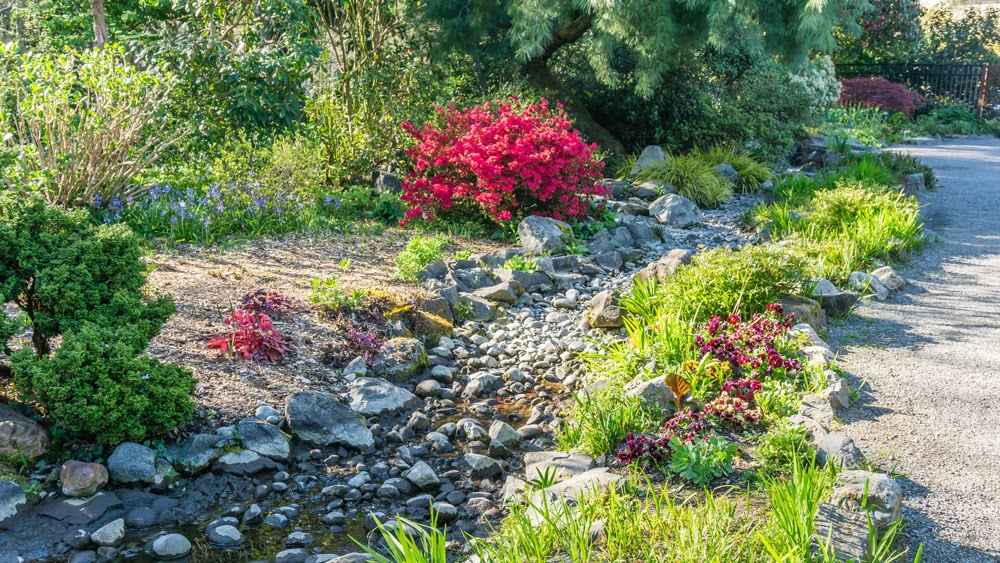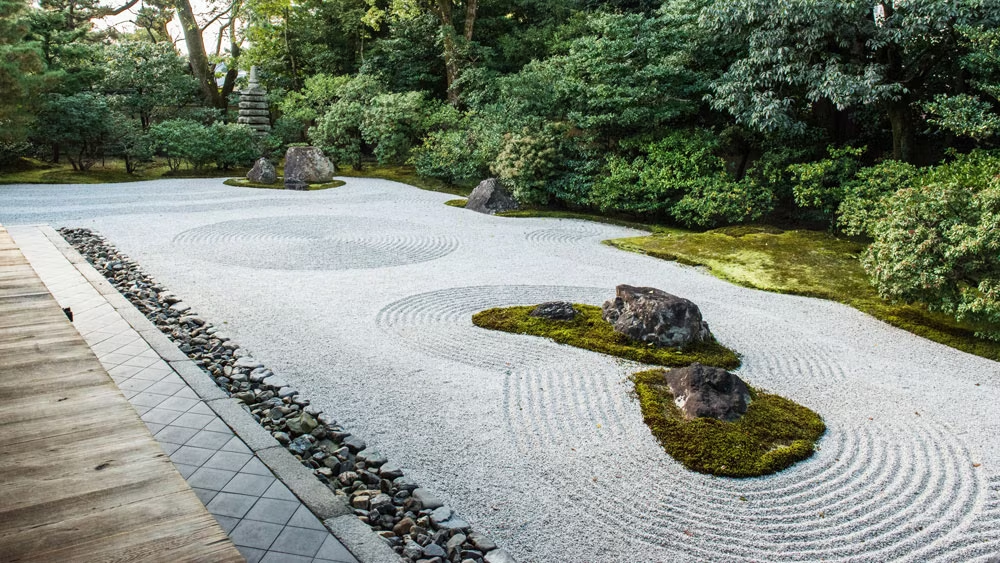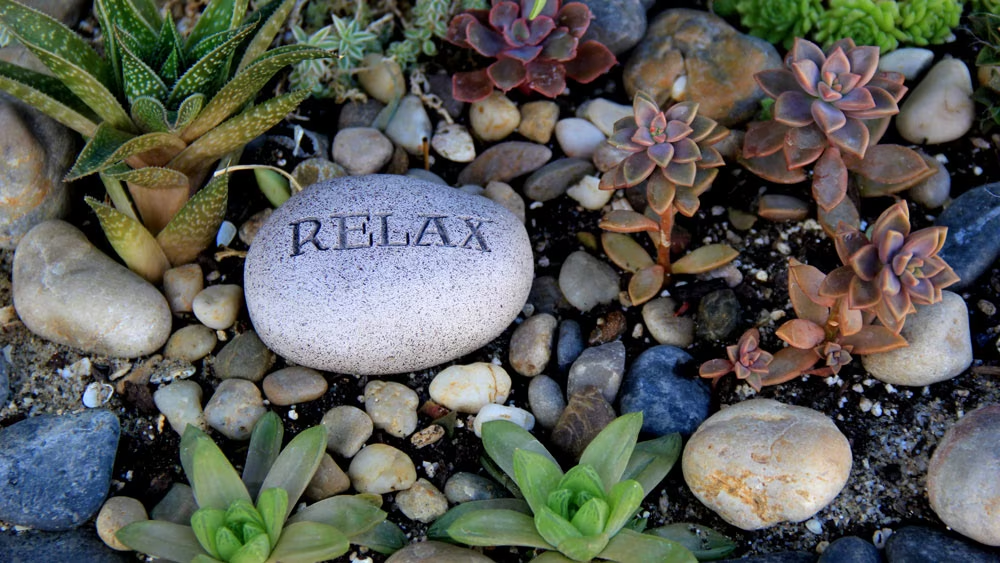Tabletop Zen gardens are a popular, calming addition in living spaces or offices. These tiny, mental oases often incorporate small plants like bonsai trees, stretches of sand that can be “swept” into patterns and small, distinctive pebbles. But what if you want to replicate that look on a larger scale?
It is possible to create an expansive garden based entirely on the designs originated by Buddhist monks in the 6th century, complete with shallow reflecting pools and meditative walkways. But you don’t need a ton of space to bring a bit of contemplation into your landscape. These simple strategies will help you find your own Zen.
Designate a small Zen space
Scattering elements throughout a larger area without committing to a structured Zen-style look can feel haphazard. Instead, consider a modest spot that will be designed only with Zen in mind. For example, this might be a seating arrangement that’s tucked away from your main space. If possible, enclose the garden with a fence or bushes that can separate the Zen space, to give yourself and visitors a feeling of being fully immersed when you’re there.
Think minimalist
A large part of the appeal of a Zen garden is the simplicity of the elements, which include rocks, sand and short trees or bushes. Plants are used sparingly for color and texture and are not as abundant as they would be in other landscaping. Here, think of them as accents, with plenty of open space in which larger statement-making rocks are deliberately placed in gravel or sand. Other components include bridges and stone lanterns, but much like the plants, they are placed strategically in the background, with a minimalist touch.
Focus on the path
Whether you have a little oasis or a larger space, your Zen garden should have some type of walkway that allows you to traverse it. Keeping with the theme of natural elements, this can be flat stones set into sand or grass, planks of wood or just a narrow stretch of crunchy pea gravel. You also can consider putting large rocks as the main walkway with smaller gray stones between them to emulate a dry bed.
Practice mindful maintenance
Similar to how Buddhist monks use tasks like sweeping and raking as forms meditation, caring for your Zen garden should inspire a sense of mindfulness and presence. Try setting aside time every morning to tidy the space as a pensive start to the day. A little rake can go a long way.














